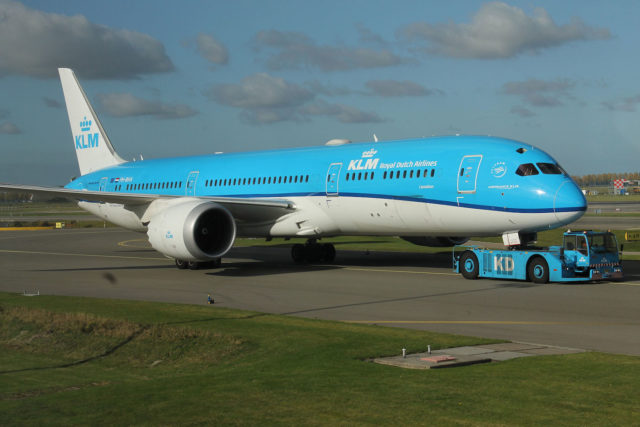
Amsterdam Airport Schiphol is going green once more and purchasing two TaxiBots, technology that allows aircraft to taxi from the terminal to the runways, all without using its engines. The name of this technology is TaxiBot and will save airlines fuel. In addition to this, the aircraft engine won’t be used and will reduce the overall noise at the airport.
This exciting new technology is already being used at 2 airports in India. It has been an overwhelming success. Amsterdam Schiphol is the first airport in Europe to introduce this new technology.
Preparations underway
They drew up a plan, presented to the Minister of Infrastructure and Waste Management in the Netherlands with dnata (a ground operations company), Air Traffic Control Netherlands, KLM, Transavia, Corendon, and KLM Ground handling to ensure that sustainable taxi procedures are standard at Schiphol. Infrastructure modifications are already underway at Schiphol to facilitate TaxiBot. An example of these modifications is widening roads for the TaxiBot to return to the terminal.
How does it work?
Developed by Israel Aerospace Industries, the concept of TaxiBot is really simple but at the same time, amazing. Traditionally, if an aircraft is being pushed back, a tug will attach itself to the aircraft and push it back to the taxiway and the pilots will turn on the engines and then taxi to the runway. But, TaxiBot goes the extra mile. Not only does it push it back, but it also brings the aircraft to the runway – all without the engine of the aircraft turned on. Then, the engines will be turned on at the runway instead of the ramp.
Think of it as a tow truck towing a car. TaxiBot works the same. The speed of the taxi is 23 knots, according to TaxiBot. The aircraft will be in the control of the pilots and will be turned by the aircraft front wheel and will brake using the brake peddle. It will be the exact same as taxiing using engines.
An ultimate success
In 2020, we reported that KLM tried out the new technology and took one of its aircraft for a spin around Amsterdam Schiphol. Furthermore, the airport has also invested in hybrid tugs. These tugs reduced the amount of carbon being emitted and also saved fuel.
In India, Delhi Airport has already tried the technology. Back in May 2021, we reported that the airport had hit 1,000 aircraft movements with TaxiBot. TaxiBot has helped Delhi Airport reduce carbon emissions. A whopping total of 532 tonnes of carbon was reduced using the technology.
A green airport
Amsterdam Schiphol is determined to reduce carbon emissions. The owner of Schiphol, Royal Schiphol Group, aims to “operate the most sustainable airports in the world.” TaxiBot will help the group to achieve that aim.
The airport wants to have emission-free ground services by 2030. This means that all operations on the ramp and apron of Schiphol will be done by electric vehicles and methods that don’t emit CO2.
With the whole aviation sector globally trying to frantically reduce CO2 and cut back on fuel spending, TaxiBot is the answer to this and will help Schiphol and others to a more sustainable industry.
by simpleflying.com/taxi-sustainability-amsterdam/





